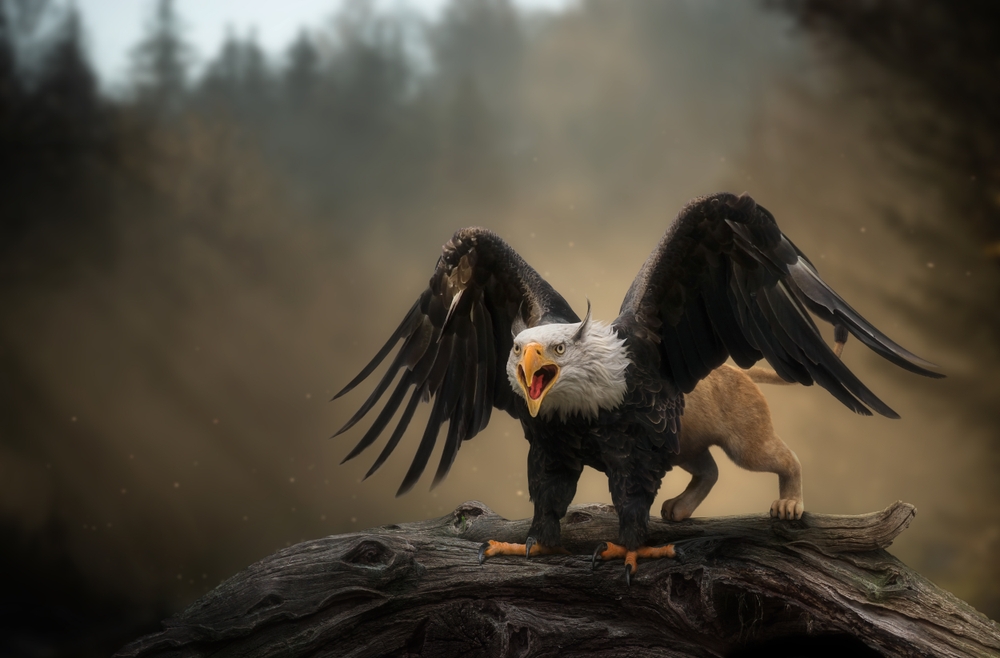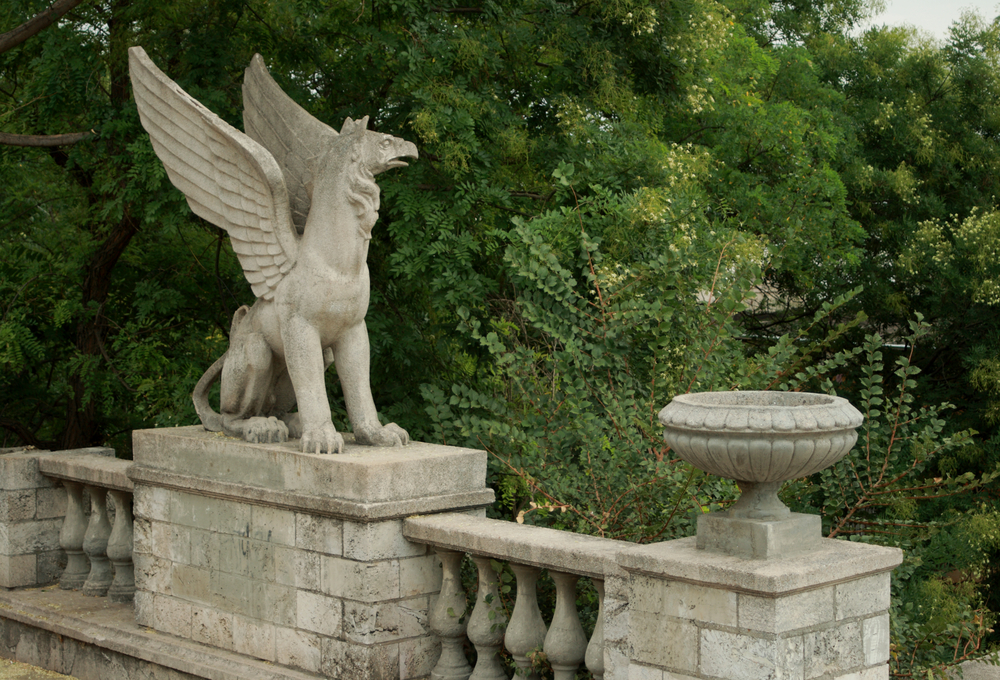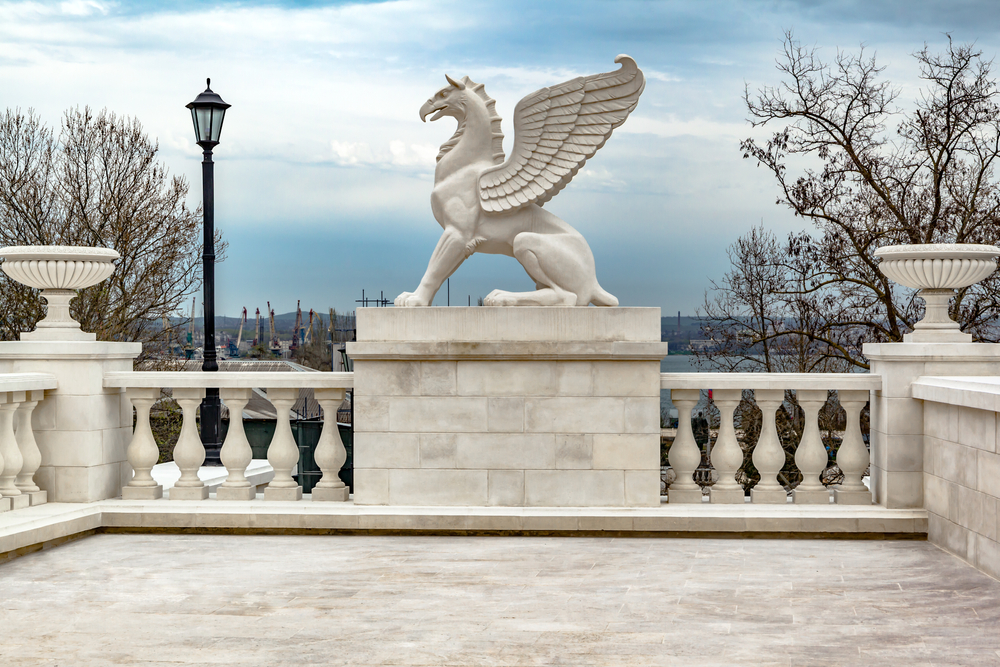The Griffin is a creature with the body of a lion, the head and wings of an eagle, and an air of regal dignity. This powerful mythical creature in Greek mythology is known in myths for guarding treasure. Whether you're a student of ancient myths, a lover of fantastic beasts, or simply curious about the legendary creatures that populate our folklore, the griffin is a fascinating subject. Let's explore their origins, myths, powers, and what they symbose in different cultures.
Jump to:
What is a Griffin?

A griffin (or gryphon) is a legendary creature with the head and wings of an eagle and the body of a lion. This unique combination of an eagle, the king of birds, and a lion, the king of beasts, makes the griffin a powerful and majestic creature. Throughout history, it has been a symbol of divine power and a guardian of the divine.
Origins and History
The Griffin's Ancient Roots
The griffin's origins can be traced back to ancient times. It appears in various cultures, most notably in Greek and Egyptian mythologies. In Greek mythology, griffins were known to guard treasures and priceless possessions. In Egyptian culture, they were connected to the sun god, and their protective qualities were worshipped.
Cultural Significance Across the Globe
Interestingly, griffins were not just limited to Greek and Egyptian mythologies. Their images appear in the art and myths of several ancient cultures, including the Persians and the Scythians. This widespread portrayal suggests that the griffin was a symbol of strength and majesty, recognised across different cultures and regions.
Recommended for you!
Best SellersThe Mythical Powers and Symbolism of Griffins

What Powers Do Griffins Have?
Griffins are often attributed with a combination of the strength of a lion and the swiftness and keen vision of an eagle. This made them powerful guardians and protectors in mythical stories. They were believed to be exceedingly strong, capable of carrying away full-grown horses and even knights in armour.
Symbolic Meanings
Griffins are rich in symbolism. They are most commonly associated with protection and vigilance. Given their role as guardians of treasures and divine entities, griffins symbolise the dual nature of wisdom and power. They also represent justice and fidelity, often depicted in heraldic motifs that showcase courage and boldness.
Griffins in Myths
Griffins have been a part of mythology across various cultures, each myth highlighting their majestic and powerful nature. Here are three captivating myths featuring griffins:
Guardians of Treasure
In tales and legends, griffins are often seen guarding treasures and gold. This role highlights their attributes of vigilance and loyalty, as well as the trust placed in them by the gods. One famous Greek legend speaks of griffins guarding the gold mines of the Scythians in the vast steppes of the north. These griffins were fiercely protective, attacking anyone daring enough to attempt stealing the gold.
The Griffin and The Arimaspians
From the same Greek mythology that tells of their guarding treasures, the griffins had notable adversaries known as the Arimaspians. This myth involves a one-eyed tribe from the north who battled with griffins to steal the gold that the creatures guarded. This myth highlights the griffins’ symbolism as protectors of divine or sacred possessions, showcasing their relentless strength and determination to guard what is entrusted to them.
The Griffin in Dante's Divine Comedy
In Dante Alighieri's "Divine Comedy," a griffin is used symbolically to represent Christ's dual nature—divine and human—with the eagle representing divinity and the lion signifying humanity. In the epic poem, the griffin pulls the chariot of the Divine Mystical Rose into the Earthly Paradise, which Dante equates to divine revelation and truth. This portrayal highlights the griffin’s role as a guardian of sacred truths and divine mysteries.
The Griffin's Legacy

The griffin's enduring legacy is vividly captured in literature and art, reflecting its symbolic significance across centuries. From ancient texts to modern narratives and visual representations, the griffin has been a constant figure of strength, guardianship, and mystique.
Griffins in Literature
Griffins have a powerful presence in literature, symbolising strength and the safeguarding of precious entities. In Dante Alighieri's "Divine Comedy," the griffin is used to represent the dual nature of Christ—combining divine and human aspects, depicted through its eagle and lion features. This majestic creature draws the chariot of the Divine Mystical Rose through the Earthly Paradise, symbolising divine revelation and truth.
The griffin also appears in contemporary literature, such as J.K. Rowling's "Harry Potter" series. Here, the griffin takes the form of the Hippogriff, a creature that also embodies strong protective traits and plays a crucial role in the story. The presence of griffins in these narratives often points to the significance of the treasures or secrets they are bound to protect, enhancing the thematic depth of the stories they inhabit.
The Griffin in Art and Culture
The griffin's appeal extends into art and culture, where it has been a popular subject throughout various historical periods. Ancient frescoes depict griffins as majestic and powerful creatures, a theme that extends into the medieval period where they commonly appeared in heraldry and tapestries. These depictions often symbolised strength, courage, and protection, qualities that were highly esteemed in medieval societies.
In modern times, the griffin continues to be a favourite subject in fantasy art, illustrating the creature's lasting appeal and symbolic power. Its representation in sculptures, paintings, and digital art continues to inspire and intrigue audiences, embodying a bridge between the mythical past and the creative present.
Frequently Asked Questions About Griffins
What are the weaknesses of griffins?
Despite their strength and mythical powers, griffins, like many creatures in folklore, have vulnerabilities. Legends often hint that griffins possess a particular sensitivity to certain magical elements, though specific weaknesses can vary by story. These vulnerabilities make the tales more intriguing, presenting challenges even for a creature as powerful as the griffin.
Is a griffin considered a type of dragon?
A griffin is not considered a type of dragon. While both are mythical creatures, griffins are distinct for their lion's body and eagle's head and wings. Dragons typically have serpentine or reptilian bodies and are often depicted with the ability to breathe fire, which is not a characteristic attributed to griffins.
What is the difference between a griffin and a sphinx?
The griffin and the sphinx are both mythical creatures but originate from different cultural mythologies and have distinct forms. A griffin combines the features of an eagle and a lion, symbolising strength and vigilance. The sphinx, most famously in Egyptian mythology, has the body of a lion and the head of a human, and is associated with architectural significance, guarding the great pyramids and temples.
Do griffins lay eggs in mythology?
In mythology, griffins are often depicted as laying eggs. This aligns with their avian characteristics inherited from the eagle. The eggs of a griffin are sometimes said to possess magical properties, adding another layer of mystique to these creatures in folklore.
What happens if a griffin doesn't respect you?
In tales where human interaction with griffins occurs, earning a griffin’s respect is essential. If a griffin does not respect someone, it is said that the creature can become fiercely protective of whatever it guards, potentially leading to dire consequences for those deemed a threat or unworthy of its trust.
What is a griffin's enemy?
In mythology, griffins often clash with other powerful creatures. One common enemy is the dragon. In some stories, they are in constant conflict over treasures or territorial disputes, reflecting the eternal struggle between different forms of power and majesty in mythological lore.
Why did griffins go extinct in myths?
While griffins are mythical and not subject to actual extinction, their presence in modern stories has diminished compared to ancient times. This "mythological extinction" could be attributed to the rise of new myths and the fading of old beliefs as cultures evolved and changed.
What does the name 'griffin' mean?
The name 'griffin' is derived from the Greek word 'grypos', which means 'curved' or 'hooked', possibly in reference to the beak of an eagle. Over time, the griffin has come to symbolise strength, protection, and vigilance, echoing the formidable nature of both the lion and the eagle.
What does the griffin symbolize?
The griffin is a symbol of divine power and a guardian of treasures. It combines the king of the beasts and the king of the birds, representing courage, boldness, and strength. In heraldry, the griffin's image is often used to signify the courage and strength of a warrior or a family.
Recommended for you!
Best SellersDiscover Mythology with Centre of Excellence
Are you captivated by the griffin and other mythical creatures? Our Greek Mythology Diploma Course invites you to explore these ancient narratives that have shaped cultures around the world. Discover the myths and understand the powerful symbols behind these legendary creatures.
Why Centre of Excellence?
- Accessibility: We believe in making transformative education accessible to everyone. That's why our Greek Mythology Diploma Course is priced at just £29, ensuring that everyone has the opportunity to explore these fascinating stories without financial barriers.
- Flexibility: Our courses are designed to fit into your life. You can learn at your own pace and schedule, making it easy to integrate your passion for mythology into your daily routine.
- Dedicated Support: When you enrol, you gain personalised tutor support and a vibrant community of like-minded learners. We are here to support and guide you through your journey into Greek mythology.
Special Invitation
We are thrilled to offer you our Greek Mythology Diploma Course for just £29, offering a saving of over £100!













